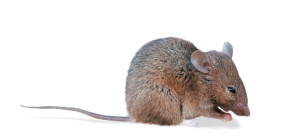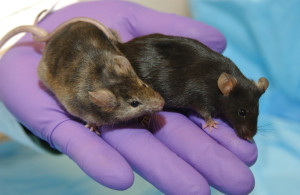Every Year NPMA declares one week in November Rodent Awareness Week.
 It is important to us that our neighbors stay in the know. Rodent Awareness Week 2015 is a great time to brush up on your rodent knowledge so that you can keep your home free from rats and mice. The more you know, the better you can protect yourself and your family.
It is important to us that our neighbors stay in the know. Rodent Awareness Week 2015 is a great time to brush up on your rodent knowledge so that you can keep your home free from rats and mice. The more you know, the better you can protect yourself and your family.
Houston has a pretty well-documented roof rat problem and has for a few years now. The wet cool months of November-March are when we get the most calls for help with rodent control in Houston, Texas.
4 Rodent Species To Look Out For In Houston
Deer Mice
These are brown-bodied mice with pointy noses, small ears, and
short brown and white bellies and tails. Deer mice mature at 7 weeks and can rapidly reproduce, which is why even just one mouse could signal an infestation. If you find a deer mouse, a nest, or droppings in your home, don’t touch anything with bare hands. These mice look cute and don’t typically bite, but their feces can carry diseases.
House Mice
 Your typical house mouse is mostly brown in color and slightly smaller than a deer mouse. They are sometimes called field mice, which is a nod to their natural habitat. But these little guys are very inquisitive explorers — especially when it comes to food. Like deer mice, house mice reach sexual maturity at 6-7 weeks. After 21 weeks gestation, a house mouse will give birth to up to 13 young and can immediately mate again.
Your typical house mouse is mostly brown in color and slightly smaller than a deer mouse. They are sometimes called field mice, which is a nod to their natural habitat. But these little guys are very inquisitive explorers — especially when it comes to food. Like deer mice, house mice reach sexual maturity at 6-7 weeks. After 21 weeks gestation, a house mouse will give birth to up to 13 young and can immediately mate again.
Both of these species can chew through electrical wiring and insulation. *It is important to note that most home insurers do not cover damage caused by pests.
Roof Rats
People often ask us how to tell the difference between a rat and a mouse. If you see a rat, believe us, you will know. Rats can grow to be about 12-15 inches in length, which is much larger than mice. Roof rats are black-bodied rodents with long tails. These rodents are very skilled climbers. Roof rats (also known as the black rat or the ship rat) will hide in the insulation of your attic and roof.
Norwegian Rats
Norway rats, also called sewer rats, are a larger, fatter cousin to the roof rat. They have shorter tails and are typically lighter in color than roof rats. Norwegian rats aren’t that great at climbing, but if you have a basement or a seller, you may find them. They’re great swimmers and live in natural habitats that nearby rivers, swamps and lakes.
If you have a rodent dilemma, don’t go looking for these animals on your own, and never handle rodent droppings without gloves and a respirator. Rodents spread diseases, like Hantavirus, through urine and feces. Hantavirus is a sometimes fatal respiratory disease that causes the lungs to fill up with fluid. Your best defense against it is to safeguard your home from rats and mice and to call a professional to handle rodent extermination.